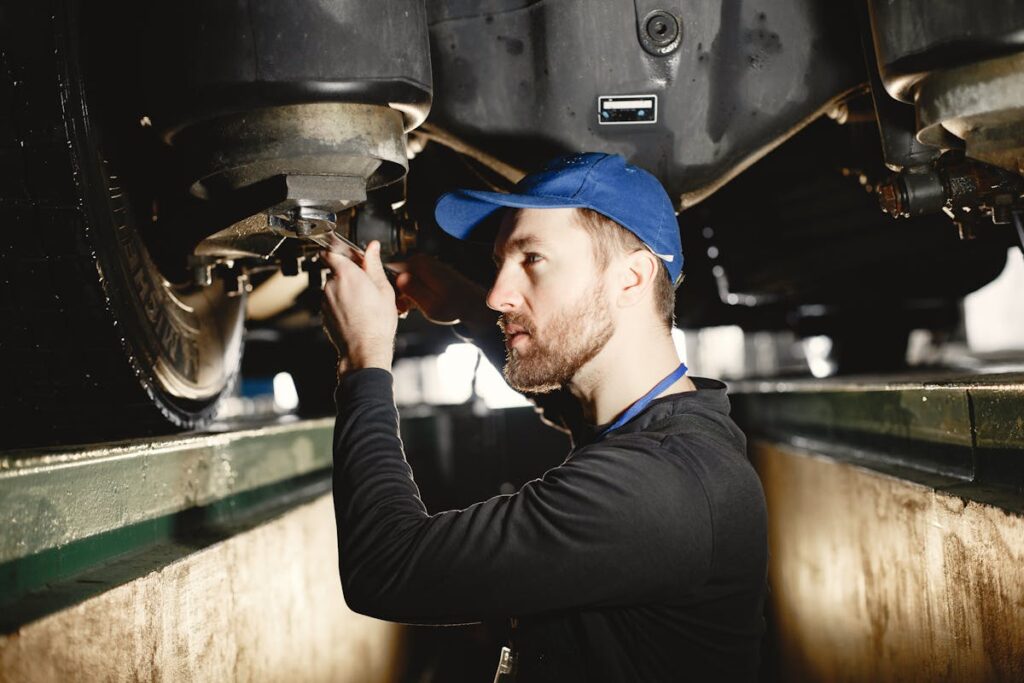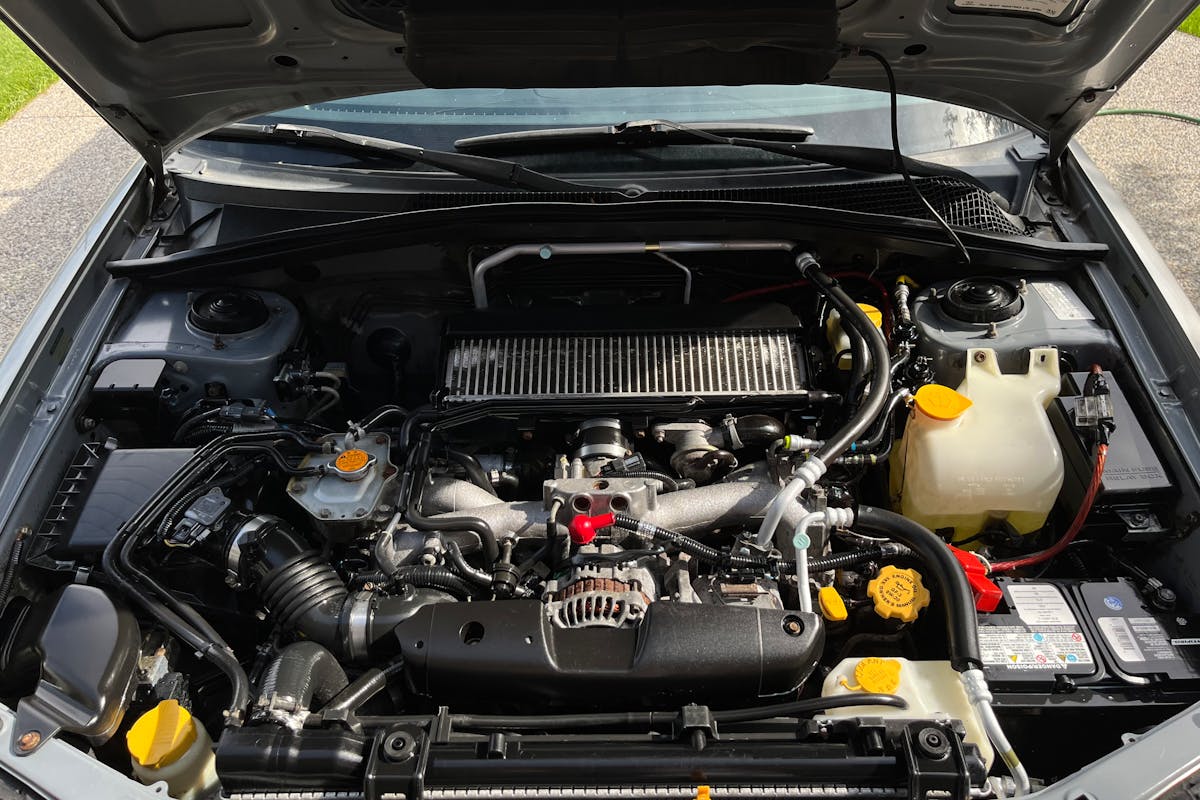Symptoms of Bad Pcv Valve
The discussion surrounding the symptoms of a faulty Positive Crankcase Ventilation (PCV) valve warrants attention due to its critical role in vehicle performance. This small yet integral component is responsible for regulating the release of gases from the engine’s crankcase, and its failure can manifest in various ways such as diminished fuel efficiency, engine misfires, oil leaks, and sluggish acceleration. With these potential malfunctions, it becomes imperative to comprehend the underlying signs and impacts of a defective PCV valve, hence sparking the necessity of further exploration into this topic.
Understanding the PCV Valve
In the domain of automotive components, the Positive Crankcase Ventilation (PCV) valve plays a pivotal role. This minuscule yet significant part, typically located on the engine’s valve cover, is tasked with controlling the release of gases trapped within the engine crankcase.
PCV valve maintenance is an essential aspect of vehicle upkeep that guarantees the longevity and ideal function of this component. Regular inspection of the PCV valve can detect potential issues such as blockage, which can lead to increased engine pressure and subsequent damage. A properly maintained PCV valve assures smooth operation of the engine, reduced emissions, and improved fuel efficiency.
Furthermore, PCV valve replacement is a standard procedure that should be performed when there are signs of failure or as part of routine maintenance. The replacement process involves removing the old valve, cleaning the valve seat, and installing a new valve. It is important to note that the exact process might differ depending on the make and model of the vehicle.
Importance of Proper PCV Function
Maintaining the proper function of the PCV valve is of paramount importance in vehicle performance and longevity. The Positive Crankcase Ventilation (PCV) system helps regulate the expulsion of harmful gases from the engine, thereby protecting the environment and enhancing the overall health of the vehicle.
PCV maintenance tips often highlight the necessity of regular inspections and replacements. A faulty or non-functioning PCV valve can result in serious damage to the engine and other components due to the accumulation of pressure and harmful gases within the crankcase. It’s always wise to verify the PCV valve and system are in prime condition to avoid these common PCV issues.
Common PCV issues include clogged or leaking valves, which can lead to oil leaks, increased emissions, and diminished engine performance. Regular inspection and timely replacement of the PCV valve can help mitigate these risks. The role of the PCV system in efficient engine operation and environmental protection cannot be overstated. Consequently, understanding and maintaining proper PCV function is central to the health and longevity of a vehicle and should be a priority in vehicle maintenance.
Symptom 1: Poor Fuel Efficiency
Shifting our focus from the importance of proper PCV function, we come to the first symptom that may indicate a faulty PCV valve – poor fuel efficiency. A deteriorating PCV valve can disrupt the ideal functioning of the fuel injection system, leading to a noticeable decline in the vehicle’s fuel economy.
The fuel injection system plays a pivotal role in maintaining engine performance by ensuring the correct mixture of air and fuel in the combustion chamber. A malfunctioning PCV valve can cause an imbalanced air-fuel mixture, which results in incomplete combustion and inefficient fuel usage. Consequently, this leads to poorer fuel economy, as more fuel is required to achieve the same level of engine performance.
Furthermore, the compromised air-fuel mixture negatively impacts the combustion process, leading to a reduction in engine power and overall performance. This often manifests as a decrease in miles per gallon (MPG), an indicator of poor fuel efficiency. As a result, if you notice your vehicle is consuming more fuel than usual while delivering less power, it’s prudent to inspect the PCV valve. Remember, timely detection and replacement of a faulty PCV valve can not only restore your vehicle’s fuel efficiency but also prevent further damage to the engine.
Symptom 2: Engine Misfires
Engine misfires, a critical symptom of a faulty PCV valve, can be identified by an inconsistent and interrupted power delivery. The PCV valve’s role in this is integral, as its malfunction can cause an improper mixture of fuel and air, leading to misfires. The consequences of these misfires can greatly impair engine performance, resulting in reduced power and efficiency.
Identifying Engine Misfires
Without so much as a warning, a bad PCV valve can lead to engine misfires, a severe symptom that demands immediate attention. Misfires are recognizable by the erratic behavior of your engine; a sudden jolt or stutter, particularly under load or during acceleration, can indicate a misfire. This symptom is not just a mere inconvenience but a serious threat to your engine’s performance and longevity.
Misfire causes can be varied, but a faulty PCV valve is a common culprit. The PCV, or Positive Crankcase Ventilation valve, plays a significant role in controlling the release of gases from the engine’s crankcase. When functioning correctly, it helps maintain ideal engine performance. However, a bad PCV valve can cause an imbalance in the air-fuel mixture entering the combustion chamber, leading to misfires.
Identifying engine misfires early on is essential. Continuous misfires can lead to increased emissions, poor fuel economy, and significant engine damage. Pay attention to any changes in your engine’s performance. If you suspect a misfire, especially if it’s accompanied by other symptoms of a bad PCV valve like oil leaks or increased oil consumption, then immediate inspection and possible replacement of the PCV valve are warranted.
PCV Valve’s Role
Building on our understanding of engine misfires, it’s essential to explore deeper into the role of the PCV valve and its correlation to this symptom. The PCV (Positive Crankcase Ventilation) valve is a vital part of the engine’s ventilation system. Its primary function is to reroute the blow-by gases from the crankcase, which are usually a mixture of air and fuel, back into the combustion chambers via the intake manifold.
This PCV valve operation is fundamental for the overall performance and health of the engine. A malfunctioning PCV valve, often due to lack of proper PCV valve maintenance, may lead to those gases being trapped, causing an imbalance in the air-fuel mixture. This imbalance can, in turn, lead to engine misfires – an erratic combustion process that may cause the engine to stutter or halt suddenly.
On a broader scale, a defective PCV valve not only contributes to engine misfires but also leads to an increase in harmful emissions and a decrease in fuel efficiency. Understanding the role of the PCV valve in engine operation is consequently essential in diagnosing and remedying engine misfires. A well-maintained PCV valve can greatly reduce the risk of engine issues, including misfires.
Misfire Impacts on Performance
Experiencing engine misfires can be alarming, primarily due to the noticeable impact it has on performance. The engine performance largely relies on the smooth operation of numerous interconnected systems, including the Positive Crankcase Ventilation (PCV) valve, which plays an essential role in the effective management of harmful engine gases and maintaining the right balance of fuel delivery.
When a PCV valve malfunctions, it can lead to a variety of symptoms, with engine misfires being one of the most evident. These misfires occur when the engine fails to fire at the correct time due to improper fuel delivery, leading to a significant drop in performance. The engine may run roughly, hesitate during acceleration, or exhibit a noticeable decrease in power and fuel efficiency.
Misfires can cause excessive unburnt fuel to enter the exhaust system, leading to potential damage to the catalytic converter, a vital and costly component of the vehicle’s emission control system. In turn, this can lead to further performance issues and potentially serious mechanical problems. As a result, experiencing frequent engine misfires should prompt an immediate check of the PCV valve.

Symptom 3: Oil Leaks
A third symptom of a faulty PCV valve is the occurrence of oil leaks. Recognizing these leaks requires an understanding of their common signs and locations. Once identified, it is necessary to explore the potential causes of these leaks and the appropriate solutions for addressing them.
Identifying Oil Leaks
Frequently, one of the most noticeable symptoms of a faulty PCV valve is the presence of oil leaks. Identifying oil leaks can be a somewhat intricate process that requires a fair amount of precision and understanding. One essential aspect in this process is oil leak detection, which involves visually inspecting the engine and its surrounding components for signs of oil leakage. This could manifest as a puddle of oil beneath the car or fresh oil on parts of the engine where oil normally should not be.
Further, understanding oil leak sources is another integral part of the identification process. While there are numerous potential sources of oil leaks, a faulty PCV valve is often a common culprit. The PCV valve, when functioning properly, helps regulate the flow of the crankcase gases back into the intake manifold. However, when it malfunctions, it can cause an overpressure situation in the crankcase, leading to an oil leak.
Precise identification of oil leaks, through thorough oil leak detection and understanding of oil leak sources, is paramount in diagnosing the health and functionality of the PCV valve.
Causes of Oil Leaks
The occurrence of motor oil leaks can often be attributed to a variety of factors, one of which is a malfunctioning Positive Crankcase Ventilation (PCV) valve. This valve regulates the flow of gases from the crankcase to the intake manifold. When it fails, pressure builds up, forcing oil to escape from the engine.
Four common leak sources include:
- PCV Valve: A faulty PCV valve can lead to excessive oil consumption and leaks. The valve’s failure creates a pressure imbalance, causing oil to be pushed out through seals and gaskets.
- Oil Pan: The oil pan, located at the bottom of the engine, can develop leaks due to physical damage or a degraded gasket.
- Oil Filter: If not properly installed or if the seal is worn, the oil filter can be a source of leakage.
- Valve Cover Gasket: Over time, the valve cover gasket can wear and fail, allowing oil to seep out.
Preventing oil leaks requires regular inspection and maintenance of these components. Understanding the causes can aid in effective prevention, ensuring the longevity of the engine. Next, we will discuss how to address oil leaks.
Addressing Oil Leaks
Often, addressing oil leaks involves diagnosing the exact source of the leak. This process can be complex given the intricate nature of vehicle mechanics. Skilled technicians employ a systematic approach to oil leak detection, starting by examining the area around the PCV valve. This valve, responsible for controlling the release of gases from the engine, is a common culprit in oil leaks when it malfunctions.
When the PCV valve is the confirmed source of the leak, a seal replacement is often necessary. The seal is a critical component, providing an airtight connection between the valve and the engine. If the seal is damaged or worn out, oil may leak out, compromising the engine’s performance.
Replacing the PCV valve seal is a delicate operation requiring precision and technical expertise. It involves disconnecting the valve, removing the old seal, and fitting a new one. This must be done with utmost care to avoid damage to surrounding parts.
Symptom 4: Check Engine Light
Illuminating unexpectedly on your dashboard, the check engine light could signify a variety of issues, one of which might be a faulty PCV valve. This often-overlooked component plays an essential role in your vehicle’s emission control system and engine health, and its malfunction can trigger your car’s sophisticated engine diagnostics to alert you through the check engine light.
The PCV valve’s role is to control the amount of gases that are recycled into the combustion process. A faulty valve not only creates performance issues but also contributes to pollution. Consequently, seeing the check engine light could mean an immediate check of the PCV valve.
Here are four key reasons why a bad PCV valve might trigger your check engine light:
- Excessive Fuel Consumption: A faulty PCV valve can cause your engine to consume more fuel than necessary, leading to unburned fuel, which can trigger the check engine light.
- Poor Emissions: A malfunctioning PCV valve contributes to high pollutant emissions, potentially causing the check engine light to illuminate.
- Irregular Idle: A failing PCV valve can cause your engine to idle at a higher RPM, which may activate the check engine light.
- Decreased Engine Performance: A faulty PCV valve can lead to poor engine performance, which can trigger the engine diagnostics to turn on the check engine light.
Symptom 5: Sluggish Acceleration
Experiencing sluggish acceleration in your vehicle may indicate a malfunctioning PCV valve. This symptom is often overlooked as a minor inconvenience, but it can signpost an underlying issue with your PCV valve that requires immediate attention.
The PCV (Positive Crankcase Ventilation) valve plays a pivotal role in your vehicle’s engine performance. It helps control the release of gases from the crankcase into the combustion chamber, thereby ensuring peak engine performance. If the PCV valve is faulty, it disrupts this delicate balance, leading to acceleration issues and power loss.
A malfunctioning PCV valve may not be able to properly regulate the flow of these gases, causing the engine to work harder than it should. This can result in an observable decline in your vehicle’s acceleration capability. You may notice that your vehicle is struggling to maintain speed, especially during uphill drives or when carrying heavy loads.
Moreover, power loss is another significant symptom of a faulty PCV valve. Your vehicle may not deliver the same horsepower as it used to, which may also manifest in sluggish acceleration. Remember, these symptoms should not be ignored as they can lead to more serious engine problems down the line.
When to Seek Professional Help
Given the potential consequences of a malfunctioning PCV valve, including sluggish acceleration and power loss, it is important to know when to seek professional help. In most cases, a failing PCV valve can be diagnosed and replaced by someone with basic mechanical knowledge. However, there are certain instances where professional assistance is recommended.
- Complex Engine Systems: Modern vehicles often have complicated engine systems that are difficult for amateurs to navigate. If you’re unsure about the process, it’s best to consult a professional.
- Persistent Symptoms: If you’ve replaced the PCV valve and the symptoms persist, it could indicate a deeper issue within the engine that requires professional attention.
- Inadequate Tools: PCV maintenance tips often suggest having appropriate tools for the job. If you don’t have the necessary tools or feel uncomfortable performing the task, seek help from a professional mechanic.
- Signs of Failure: A severely damaged PCV valve can cause serious engine damage. If you notice symptoms such as excessive oil consumption or smoke from the exhaust, it’s time to get professional help.
Frequently Asked Questions
How Often Should the PCV Valve Be Replaced?
The PCV valve lifespan varies depending on the vehicle’s make and model. However, for ideal engine performance, it is generally recommended to replace the PCV valve every 20,000 to 50,000 miles. Regular maintenance is essential.
What Is the Average Cost to Replace a Bad PCV Valve?
The average cost to replace a PCV valve varies depending on vehicle make and model, but typically ranges from $50 to $150. This estimate includes both the parts and labor costs associated with the replacement process.
Can a Bad PCV Valve Cause a Car to Stall?
Yes, a malfunctioning PCV valve can indeed cause a car to stall. This is due to its critical role in maintaining peak engine performance, where a faulty valve can disrupt the air-fuel mixture, leading to stalling.
Are There Any DIY Methods to Clean or Repair a PCV Valve?
Yes, PCV valve maintenance can be performed using DIY cleaning methods. It involves detaching the valve, applying a cleaning solution, and gently scrubbing with a brush. However, replacement is often recommended for ideal performance.
Does Driving in Certain Weather Conditions Affect the PCV Valve?
Driving in certain weather conditions does not directly impact PCV valve performance. The functionality of the valve is more associated with the engine’s operation rather than external weather conditions.






